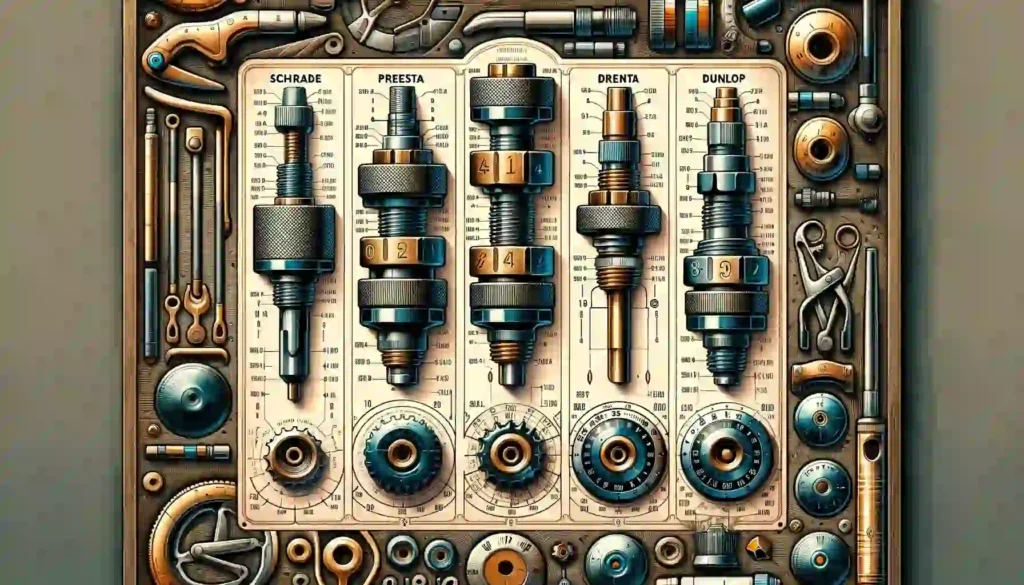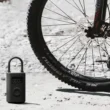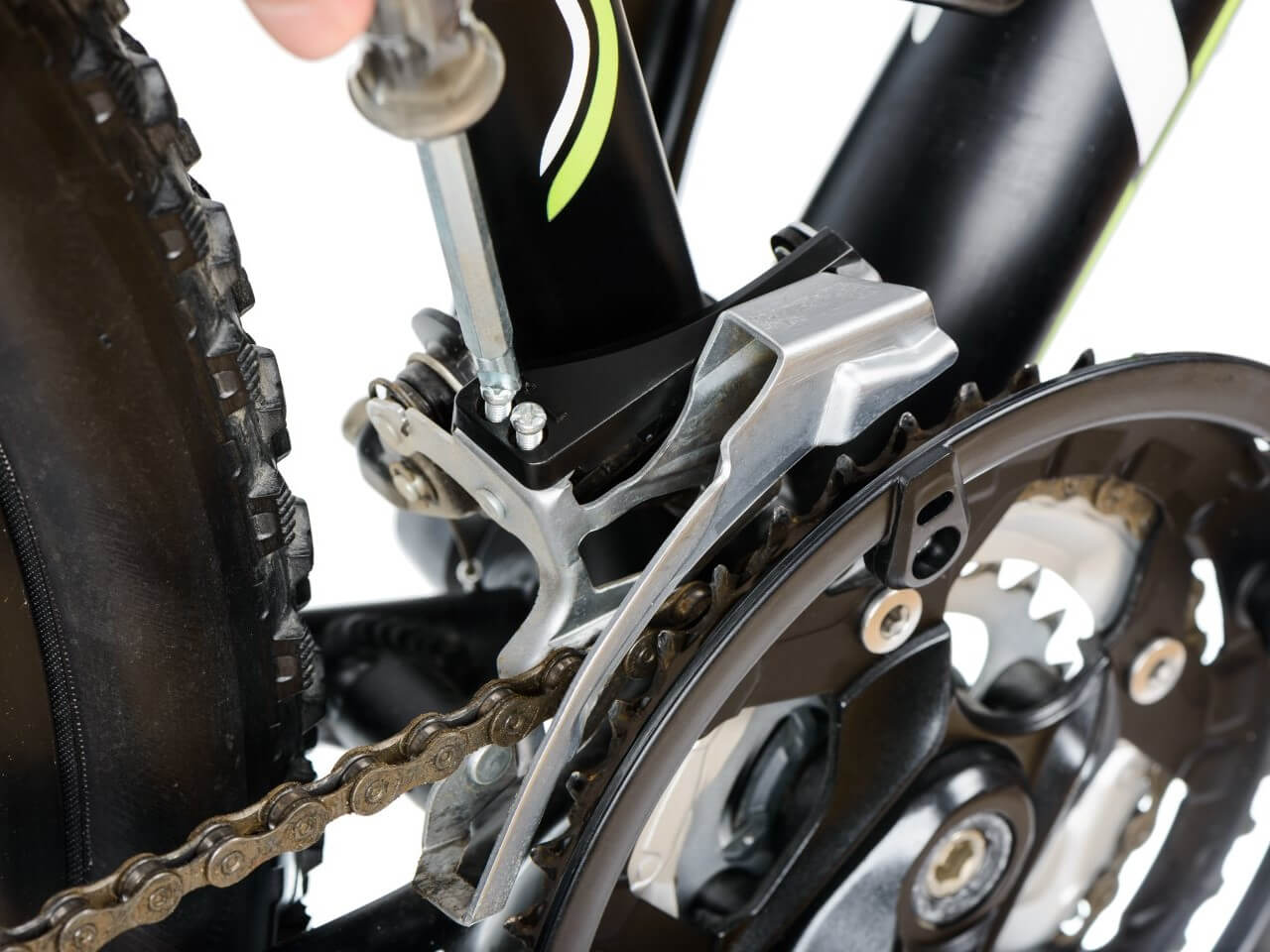Overview of Different Types of Bicycle Valves
The tube is a crucial component of bicycle tires, requiring fresh air. Air enters the tube through a valve when pumping. There are various bicycle valves that could be installed in your tire. In this article, we provide an overview of these variants, explaining their advantages and disadvantages.
What are Bicycle Valves?
A valve is a device that directs the flow of liquids or gases. Bicycle valves, situated on the tube or rim, serve this purpose. Air is pumped into the tube using a pump, ensuring the tire is sufficiently pressurized for cycling. Generally, valves allow substances to be let in, released, or passed through.
Bicycle valves are a type of check valve, meaning air flows in only one direction. The valve on the wheel is fitted into a valve stem, whose length and diameter are precisely tailored to the rim’s cross-section and bore.
Overview of Different Bicycle Valves

In stores, you’ll find various bicycle valves, each with its own name and distinct design. Generally, the valves can be categorized into three common types:
- Schrader Valve, also known as an Auto Valve (abbreviation AV)
- Presta Valve, also known as a French Valve or Sclaverand Valve (abbreviation SV)
- Dunlop Valve, also known as a Woods Valve or Blitz Valve (abbreviation DV)
These valve types are not interchangeable. If a tube initially had a French valve, you cannot simply replace it with a Blitz or Auto valve. To change the type of valves on your bike, you would need new tubes. The bore in the rim is crucial for choosing the right valve. Tubes with a French valve fit through narrow bores, while those with bicycle or auto valves do not.
Bicycle valves also differ in another criterion. A standard bicycle pump only works with Sclaverand or Dunlop valves. If your bicycle tube has a Schrader valve, you will need a car pump. These can be found at every gas station, but you might have to push your bike there if you have a flat tire.
However, adapters are available that allow you to use a standard pump with Schrader valves. Modern bicycle pumps often come with an integrated adapter. They have two sockets, one for Schrader valves and the other for Dunlop or Sclaverand valves.
Additionally, there’s the Regina Valve, mainly used on bikes in Italy. However, it’s not widely used, so we will omit it from our overview.
Also read:
The Dunlop Valve (DV)
This valve type is named after its inventor, tire manufacturer John Boyd Dunlop. It consists of three parts: the valve stem, which is firmly welded to the tube, the valve itself, and a small cap nut that secures the valve in the tube.
Older versions of this valve type require significant effort to pump air through. However, newer models are designed to reduce resistance, making inflation easier and quicker. Hence, this valve type is also known as the Blitz Valve.
The Dunlop Valve has a small tube with air holes at the bottom. In newer models, a small ball inside the valve prevents the air from escaping. The ball offers no resistance during pumping.
Pros and Cons of a Dunlop Valve
| Advantages | Disadvantages |
|---|---|
| Easy to use | Air pressure only readable with a pump |
| Quickly replaceable without tools | Lowest air pressure of all valve types (max 5 bar) |
| Suitable for all pumps | Poor theft protection |
| Durable construction |
Dunlop valves are ideal for everyday cycling due to these characteristics. However, they are not recommended for racing bikes.
The Schrader Valve (AV)
This is the second most common valve type in bicycles, colloquially known as the Auto Valve. It is also used in vehicles. Inside the valve stem of the Schrader Valve is a pin that is pressed down when you attach a pump. Removing the valve cap makes it easy to inflate the tube. To deflate, press the pin with a thin object.
Pros and Cons of a Schrader Valve
| Advantages | Disadvantages |
|---|---|
| Inflatable at any gas station | Standard pumps not applicable |
| Easy to handle | Requires special tools for replacement |
| Precise pressure setting and reading | Maximum pressure lower than Sclaverand valves |
| Higher maximum pressure than Dunlop valves | |
| Durable construction |
The Auto Valve is as easy to use as the Dunlop Valve. Its major advantage is the ability to inflate the tube at any gas station and precisely determine the air pressure. This type of valve is commonly used in touring bikes and mountain bikes.
The Sclaverand Valve (SV)
Racing cyclists often use the French Valve. It is much narrower than other types, allowing a maximum tire pressure of an impressive 15 bar. No other bicycle valves offer this level of pressure. The valve operates with a screw and countersunk head. A knurled nut opens and closes the valve.
Before inflating, the valve knob needs to be unscrewed until loose. Then the pump can be attached to inflate the tube.
The air pressure from inside the tire automatically closes the valve, preventing air from escaping. During inflation, the tire’s counterpressure needs to be overcome. The higher the tire pressure, the stronger the valve seals. This feature is perfect for tires requiring high pressure, like those on a racing bike.
Pros and Cons of a French Valve
| Advantages | Disadvantages |
|---|---|
| Ideal for high tire pressure | Fragile components |
| Thinner bore in the rim increases rim stability | High susceptibility to defects |
| Precise pressure setting and reading | |
| Easy to replace |
The characteristics of the Sclaverand Valve make it especially attractive for racing bikes and high-quality mountain bikes.
Which Bicycle Valves are Better?
There’s no one-size-fits-all answer, as it depends on the type of bike you have and where you ride. When choosing the right bicycle valves, consider your own requirements and needs. If you’re without a bicycle pump, then the Schrader Valve is your best choice.
If speed is your priority, you need maximum tire pressure and ideally a Sclaverand Valve. For everyday cyclists, ease of use is more important, making the Dunlop Valve the preferred choice.
Special valves are available for tubeless tires, which must be compatible with the tubeless tires.








